Oct 14 2017
MCCC objects to Whitehaven “Get out of Jail Free” noise modification
The MCCC has lodged its objection with the Department of Planning re the Whitehaven Mod 4. The FULL Submission can be downloaded here. The MCCC was very clear in the covering letter to the Planning Secretary.
“The Maules Creek Community Council objects to the Mod 4 Environmental Assessment from Whitehaven Coal to remove a specific requirement for continuous environmental noise improvement by maintaining or reducing mining equipment sound power.
Five years on from the original determination the proponent has returned to the planning system to water down its noise conditions based on the dubious assertion that it has a strong record of compliance. Nothing could be further from the truth on noise.
The proponent provides no evidence of why they should be allowed to remove this requirement by the Planning Assessment Commission (PAC) to enforce continuous environmental noise performance improvement by maintaining or reducing sound power.
The other coal mines operating in the area carry the same conditions in their approvals due to the commitment of the government at the time to have consistent regulation in the Maules Creek area. We see no reason to alter that position.
In general, the planning approval has failed to protect vulnerable families from the impacts of noise in the district. Farmers inside the zone of affectation are stranded, dealing with a belligerent and powerful company, while those outside the zone have uncovered a pattern of non-compliance.
The topography of the surrounding Nandewar range, inversion layers and remote location far from the eye of compliance staff has left families at Maules Creek vulnerable to a secretive proponent who games the system at every turn.
We believe that this proposal in Mod 4 to remove noise conditions has a negative flow on for the cumulative noise from mining in our area and for planning integrity across the state. We strongly recommend that Mod 4 is rejected.”
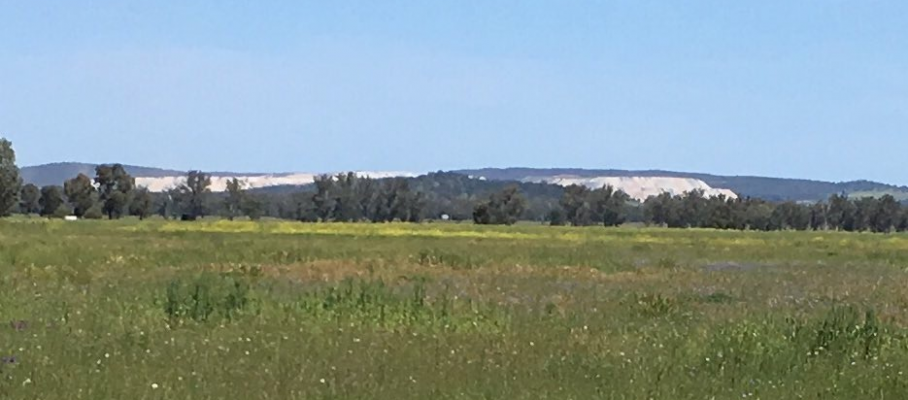
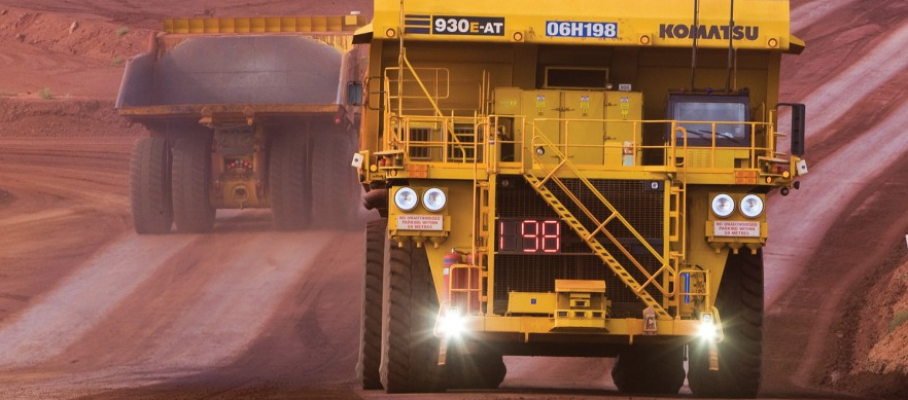
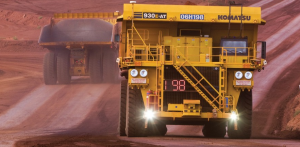
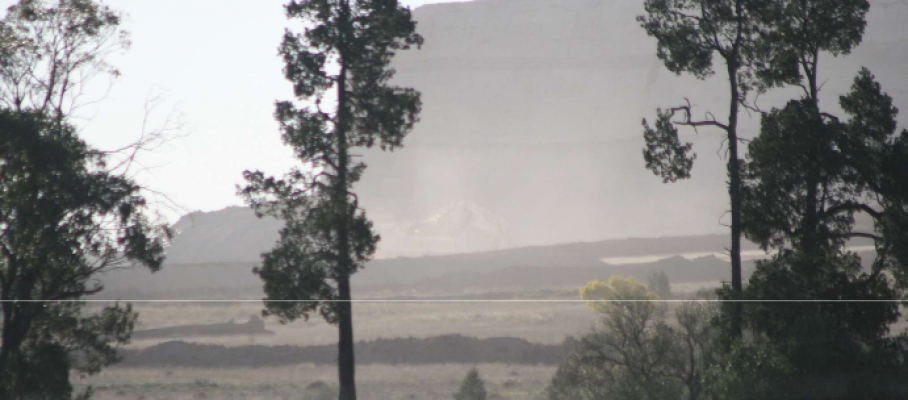
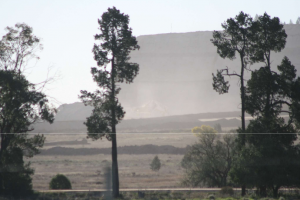
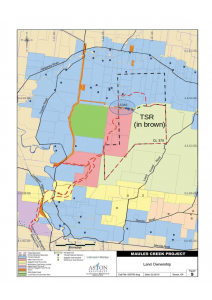
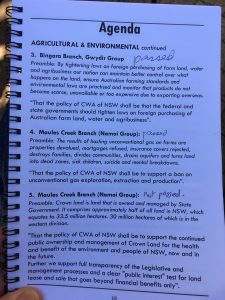
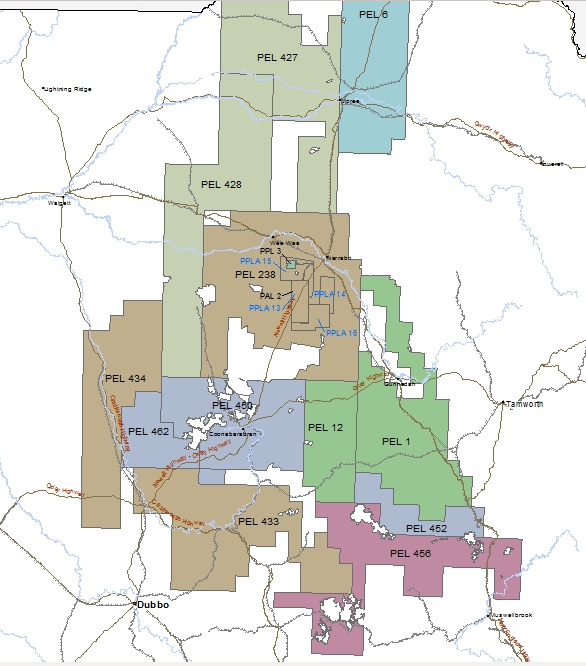
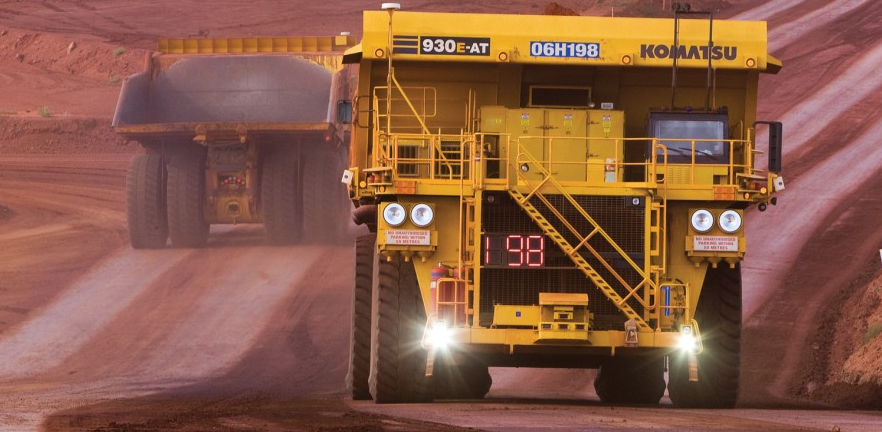
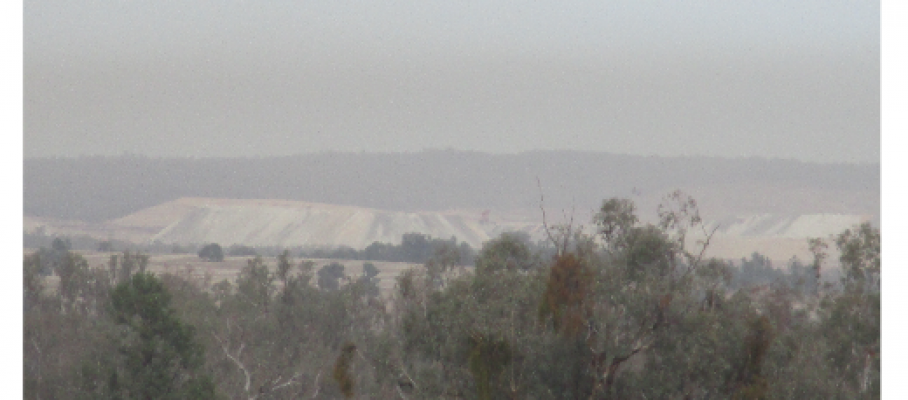

Nov 2 2017
Draft Minutes of the Boggabri – Tarrawonga – Maules Creek Community Consultative Committee
Meeting Held: 2 November 2017 from 2:00pm
Venue: Boggabri Golf Club
1.0 Welcome
David welcomed everyone to the Joint CCC.
Lachy Johnson has resigned to take up a job elsewhere. Lindsay Fulloon is here from the EPA and Steve O’Donaghue from the DPE.
2.0 Present and Apologies
Present:
Andrew Johns (AJ) – Gunnedah Shire Council
Cr Ann Luke (AL) – Gunnedah Shire Council
Anna Christie (AC) – Environmental Representative (Alternate) Maules Creek and Boggabri Coal CCCs
Carolyn Nancarrow (CN) – Maules Creek CCC
Catherine Collyer (CC) – Boggabri Coal, Tarrawonga & Maules Creek CCCs
Dan Martin (DM) – Environmental Superintendent, Boggabri Coal
Dan Yeates (DY) – Group Manager Health, Safety and Environment, Idemitsu
Darren Swain (DS) – External Relations Superintendent, MCCM
David Ross (DR) – Independent Chair
Debbie Corlet (DC) – Independent Secretary
Geoff Eather (GE) – Boggabri Coal CCC
John Hamson (JHa) – Tarrawonga Coal Mine
Julie Heiler (JH) – Tarrawonga CCC
Lindsay Fulloon (LF) – EPA
Mitchum Neave (MN) – Boggabri Coal CCC
Peter Wilkinson (PW) – General Manager, MCCM
Richard Gillham (RGi) – Boggabri Coal CCC
Cr Robert Kneale (RK) – Narrabri Shire Council
Robyn Grover (RGo) – Maules Creek CCC (Alternative)
Ron Campbell (RC) – Narrabri Shire Council
Roselyn Druce (RD) – Boggabri Coal CCC
Sarah Torrance (ST) – Boggabri Coal
Steve Eather (SE) – Maules Creek CCC
Steve O’Donoghue (SOD) – Department of Planning & Environment
Apologies: Annie McMahon (AMcM) – NSC Representative, Blair Meyers (BM)- (Tarrawonga Mine), Jack Warnock (JW) – Community Maules Creek CCC, Libby Laird (LL) – Community Maules Creek CCC, Peter Forbes (PF) –Boggabri Coal, Scott Mitchell (SMi) –MCCM, Simmone Moodie (SMo) – Aboriginal Representative, Maules Creek CCC
Observers: John Hamson (JHa) – Tarrawonga CCC, Kirsten Gollogly (KG) – WHC, Lexie Frankham (LFr) –
WHC
3.0 Declaration of Pecuniary or Non-Pecuniary Interests
RC – Representing Narrabri Council runs a waste management firm that contracts to Whitehaven and Boggabri Coal.
RGo – Property falls into the ‘Zone of Affectation’ for acquisition by Boggabri Coal Mine (BCM).
JH – Property falls into the ‘Zone of Affectation’ for acquisition by Boggabri Coal.
RGi – Property falls into the ‘Zone of Affectation’ for acquisition by Boggabri Coal.
SE – Has a son working for Boggabri Coal.
RG – Has a daughter working for Maules Creek.
DR gets paid for chairing these meetings as does DC for typing the minutes.
4.0 Acceptance of Previous Minutes
Minutes from previous meeting were endorsed by participants.
All actions from the May Joint CCC meeting had been closed.
MN – Question to DM re hazardous reduction and environmental fuel loads etc.
DM – Going through consultation with local agencies – hazard reduction offset areas to understand fuel loads, rural fire services. Other methods we may look at doing include stop grazing.
5.0 Business Arising
DR then split participants up into groups for discussions about key issues the community has identified in relation to the presence and operation of the mines. This was undertaken to ensure that all have opportunity to participate.
DR – What were some of the big things that came out. Different tables shared their thoughts.
RGi’s table – Environmental issues and employment.
SOD’s table – Regional dust monitoring network. Progression on that.
CN’s table – Changes in the community. Involvement in sporting activities which now moved to regional centres.
RK – Result of mining or the evolution of change.
DM – Talking to community from a mine buying off lands for offsets and that’s lead to that conversation. Farmers don’t employ. Skills shortage.
PWi – Contracting business opportunities – Hunter Valley and other places getting more opportunity than Narrabri. Better consultation with the mines working together. WHC seen as a larger company now and not consulting. Dust issue and the network that doesn’t include Boggabri.
AC – There were a list of strategies – Leard Forest, Noise, Blast Management, Water Management, Regional Biodiversity Management Plan. Stage 2 of the Aboriginal Heritage Strategy – none of them has been done.
DR – In a second we’re going to be getting an update on where strategies are up to.
LFr – Said that the 4 strategies have been approved – air, noise, blast, and regional biodiversity. Water
management is still with the companies.
DM – conversations with Steve about the water strategy for review and approval. Aboriginal Heritage Strategy with LEH accepted by Department of Planning.SOD – Mentioned it had been endorsed. Aboriginal Heritage Strategy with OEH had been endorsed. The Dept requested some changes – time frames and commitments and that is back with Boggabri Coal and wouldn’t take too long to address those concerns.
CC – (to SOD) What is the difference between a condition and a commitment?
SOD – There is no Statement of Commitments in recent approvals.
DR – Said that Lindsay is going to talk to us about the Industrial Noise Policy and where it is at now.
LF – The EPA review of the Industrial Policy has now been completed and has culminated in the release of the new Noise Policy for Industry last Thursday (26 October 2017). Consultation on a Draft Industrial Noise Guideline occurred throughout the review process. There were a lot of submissions received which were reviewed and considered by the EPA in developing the new policy. The release of the new Policy has also seen the release of a “Short Community Guide” to the new policy and a Frequently Asked Questions document. Transitional arrangements have also been published which describe how the new policy will apply to projects that are already in the development assessment process or are already approved. Key things that changed – modifying factor for noise – default day time noise limit is 5 decibels higher
during the day light hours. This reflects that most people are out and active and not trying to sleep during the day. Consistent with around the world and the World Health Organisation guidelines. Key thing is the transitional arrangements which the old policy continues to apply to all existing sites except for the application of the modifying factors for low frequency noise and tonality. This means little will change for those living near existing mines unless there are significant operational changes proposed that require further noise assessment. In these circumstances, assessment is then required against the new Policy. This will also mean that residents around existing operating mines generally won’t see an increase in the limits applying in the day light hours.
SE – About the low frequency noise – how’s it’s important reporting to penalty.
LF – As you may be aware, the EPA required Maules Creek Coal to undertake a Mandatory Environmental Audit. The auditor recommended that improvements be made to the information provided in the mines attended noise monitoring reports to better demonstrate that the low frequency noise penalty was being applied correctly (amongst other things). I can confirm that this information is being provided in the reports provided by the mine to the EPA.
AC – However, we have received the first Quarterly monitoring report no one knows how to interpret it. The reporting doesn’t show which has been exceeded. What is an exceedance.
LF – The mine is also required to publish the results of its noise monitoring on its website. I understand this information may not be provided in these monitoring summaries. The regulations require those summaries to be published on the website. I’d suggest that the mining companies might be best placed to address your concerns about this issue.
AC – Requirements for publishing in the EPA’s 2013 document “Requirements for Publishing Pollution Monitoring Data” – a clearly meaningful summary to inform people of what is happening. It has exceeded somewhere – we are supposed to be reporting the different frequencies to see where the exceedance is – it is an essential part of a meaningful report.
LF – But thePolicy was only released last Thursday.
AC – we have received one and we are calling on you to provide guidance because that is not meaningful. No one in the meeting knew what it was, including the WHC representatives.
DR – Is it an example of teething problems?
AC – No doubt, and we are pointing it out – in its present form it is meaningless.
LF – I can’t change the regulations and what is required. You will need to discuss with the mines.
AC – Now we bounce back to the mines which will mean we have to wait until the next meeting.
CC – Working on these changes and before any Policy is finalised – it would be more advisable to discuss with the individual CCC groups to get their input. Now we must react to it. 28-day exhibition and it doesn’t allow full knowledge to the communities that are affected. What all that technical data means. Why were these policy provisions not tested with groups like the CCC’s and affected communities?
LF – I will certainly take that message back to our policy section. The Policy applies right across all NSW and not just coal mines. To essentially resource consultation to reach communities around each licenced premise is a challenge.
PWi – Assumptions on the new Noise Policy – we will not change anything we do. Effectively, it remains identical to what we have been doing so far and will continue to manage in the same fashion.
DS – A question on the Strategies to Lexie and Dan and a question on cumulative dust impacts that came out of the CCC meeting yesterday – how do the Strategies account for cumulative dust impacts?
LFr – The “Strategy” is a higher-level document – sits above site Management Plans. Site Management Plans manage compliance. The strategies provide cumulative criteria. Includes approaches to monitor and manage the impacts against the criteria.
RK – Re the new Policy – the new policy against the old policy and stakeholders. Property owners were looking forward to the new Noise Policy to relieve them of noise impact, for some relief to what they perceive as excessive noise. Waiting for it to improve and lower for existing industries that isn’t going to happen.
LF – The policy review assessed all available current scientific literature. This suggested there was not a need to change noise criteria to reduce impacts to protect people’s health and avoid annoyance. At a broader level, the policy continues to set default noise limits at 35dB for greenfield industrial developments in quiet rural environments. This level remains below the WHO recommendations. That’s the basis – many developments including mines – based on international literature – to lower noise limits also reduces development opportunities and there needs to be sound scientific reasons to do that. The review did not find that such a reason existed based on available science.
RK – Those still complaining that noise limits should be lowered. Mines continue to say we are working within our limits. Arrive at a situation where everyone is happy. How do you convince those people that the noise is too much – how do you tell people these limits are within the WHO recommendations. JH – Have any of you lived in this area with a continual drone in your ear. I don’t have an issue with mining as such. A Government walks away and doesn’t live it. The WHO is fine, but this is Boggabri and the Government has a duty of care. It isn’t acceptable to us and stop putting the responsibility on the mines – you licence them. The Government takes the royalty and runs.
AC – The EPA have never actually validated the new standards in the field. The previous Minister Stokes said we have never tested these in the field. The EPA has cherry-picked the World Health Organisation reports and ignored and we should have our own noise standards. The landmark WHO document “Noise”:
“Countries are expected to develop their own national and local noise standards in accordance with the amount of noise hazards they are prepared to accept.” The EPA’s modelling is done on a desk and not done in the field and widely disputed.”
LF – The real challenge is that a government makes a particular policy for a broader suite of criteria. These are known as the “triple bottom line” and attempt to balance – social, economic, and environmental outcomes. Preparing a policy, they try and deliver a landscape that benefits the majority. This means striking a compromise between local impacts and the benefits of a development – so economic and social growth can be delivered. This is the trade-off made in these discussions. Local impacts arising from the 35dB default limits, are considered by Government to be sufficiently low that they do not outweigh the benefits of development to the broader majority of people where industry can establish and operate.
CN – Isn’t it going to affect the progress now – the low frequency noise? Are the new guidelines clearer on what can be enforced? The old one was grey – this was considered a breach.
LF – The old Industrial Noise Policy (INP) – Two dB Rule when monitoring is done to determine compliance with noise limits (let’s say for example the limit is 35 decibels) not considered to be in breach if it went 2 decibels over that figure – to account for monitoring measurement error. INP will continue to apply to existing mines until their operations are significantly altered and assessment against the new policy is required. The two-dB rule has been removed from the new policy. In realty though – 2 decibels are not discernible to the human ear. The potential impact this has is that people can’t tell if it is 35 or 37 decibels. So, from the point of our prosecution guidelines also indicate that for the EPA to prosecute a breach, it must not be trivial.
CC – 2 decibels will not be detected – what is the level that is viewed before people can detect that level.
LF – My understanding is that the threshold is around 2dB.
CC – 2 decibels is fine but when you add it to the 35 – that makes it different.
LF – EPA’s interpretation is that the 2 decibels rule is that the limit is still 35 – but defining that 2-decibel limit is to determine what sort of regulatory action is warranted. While it may not be possible to prosecute a trivial exceedance, if there were continued exceedances of this magnitude, the EPA may be able to use other regulatory tools to require further noise mitigation at source.
RC – I haven’t heard that noise. Can see the effect on our pretty country and if it was my property joining but I live in town in Narrabri and live 1 block from the highway – big water tower on the corner. I have the town clock every hour on the hour. Is it that the low hums are more offensive to the ear as opposed to trucks on the bridge, tyres squeaking etc.
AC – The Industrial Noise Policy, past and present, states that its performance criterion is the protection of 90% of the population from being very annoyed by noise. However, this is not being achieved at Maules Creek.”
LF – Penalty notice or prosecution, or some other response such as a pollution reduction program to reduce noise emissions. Was it a once-off or regular exceedance would all come into play.
RD – The noise itself with windows shut and TV up – you can still hear it outside. Try to go to sleep at night – it is the low decibels, the trains, and the trucks. Sounds like a vehicle coming into the property all the time.
LF – Compliance doesn’t mean you won’t hear the mine. The approval from the NSW Government gives the mine the capacity to impact surrounding communities up to a certain limit.
RD – Fix that report – so we can see what is causing that issue. Whatever is making that exceedance.
LF – EPA has had its own monitor in for nearly 2 years monitoring the Maules Creek Coal Mine. It is not detecting any exceedances.
AC – It is complying because you are adding in the 2 decibels above it.
MN – What about the Aboriginal Heritage Strategy – has it been done? Has any draft gone back to the community to get their views? Have Aboriginal parties being engaged on that side?
MN – Moree farmer Turnbull got fined $700,000 from the EPA – what’s the difference between them and the farmer – seems to be leniency on the mines. How many strikes before they are out?
DM – There has been consultation and many meetings to discuss and we have held meetings at different locations like Council, the Civic Centre – they were invited to attend from across all 3 mines. That went back and forth 12-18 months. It has been a long process.
MN – Did we see a draft copy. I’d like to see a draft copy.
DM – To find a copy of the draft Aboriginal Heritage Strategy and forward to DR for distribution.
LF – The EPA doesn’t regulate vegetation anymore that’s now OEH. Can’t give much detail as it isn’t ours. We have mines regulated in accordance with an approval issued by government. Turnbull family cleared without any approval. Where the mines exceed the EPA’s prosecution and compliance guidelines are used to determine what level of action is appropriate and what is considered proportionate to those exceedances. If we had seen a substantial non-compliance and it caused significant harm to the environment or surrounding people / property it would go to the Land and Environment Court, but if minor, we look at other tools and Penalty infringement notices.
MN – How many times before you revoke their licence?
LF – It would depend on the seriousness, the potential to harm people, property or the environment, whether the act was considered accidental or intentional – those sorts of things.
PWi – (Highlighted from is table) Idling locomotives stop in the Boggabri town which is an issue. Empty trains produce more dust – maybe with the speed of the train it produces less. Water licence – raised as an issue. 2 different licences for a water license – We have approached the State Water but as a mine we go through DPE and do those 2 regulatory bodies and how do they communicate.
SOD – Mining proposal is under the Water Management Act. Certain approvals are needed under water management under the SSD project. Will depend on what the water take is – open cut pit and licence required for taking water for that. Under the Water Management Act – DPI.
SOD – Boggabri – bore field is being regulated by any other farmer – moved from the mine – water allocations and water share and entitlement through CLAW – regulation licence.
JH –These 2 Departments aren’t talking. There are two (2) different licencing companies and they aren’t communicating. It should be 1 Department doing licencing.
MN – One of those mines cleared forest to get ahead with what is coming. If fully engaged 3 or 4 years ago – before clearing they had no rights. Those farmers got hit hard and those mines didn’t get much.
SOD – There is a range of regulatory sources. Under the Native Vegetation Act – few farmers do get penalised. Offsetting and habitational are dealt with through the department prosecution guidelines.
CC – We have a proposal for the 3 mines – to organise a combined “Boggabri Miners Trophy Day” as a fundraiser in March 2018. The proposal is that the mines sponsor a BBQ held at the golf club (as a non-profit club) and a trophy day that can bring in some funds and encourage people to come and join in. Fundraise for other local charities to donate that money – if it comes to the club, or the local school, pony club, other schools.
CC – To prepare a proposal (with help from Robyn) for a combined “Boggabri Miners Golf Trophy Day”. Prepare and send to all the mines.
DS – Mentioned that Maules Creek were going to have one.
6.0 Correspondence
N/A
7.0 General Business
AC – Asked LF – In your explanation about the 2-decibel rule which included in the background paper in the new policy – the 2-decibel rule is no longer relevant. It was introduced in the 90s and it was inferior and now technology is so advanced it isn’t required. The EPA itself has conceded in the background Technical paper that the 2-dB tolerance was included in the INP to account for uncertainty including instrumentation accuracy/error but due to advances in acoustic technology is no longer relevant. We can give you an opportunity to seek counsel from your noise experts as to the hesitation and why it has been applied.
LF – The new 2 decibel rule isn’t a new policy. Existing sites will continue to be regulated against the INP (the old policy) and that is where this rule comes from. Until these operations are substantially modified, these existing rules continue to apply.
AC – Why are you applying the old policy with the new policy – it doesn’t make sense. As Roz mentioned the health impacts let’s talk about whether they were addressed – NSW Health although it has a delegate on the INP Steering Committee – did not make a submission in this process. They merely added comments on the submissions. Public health has not been properly considered. Number of people suffering sleep deprivation is causing depression but NSW health just commented there wasn’t evidence to support that claim.
AC – Councillor Campbell posed the question what does it sound like? There is literature from Geoff Leventhal – he is the worldwide guru on low frequency noise and his research much relied upon by the EPA, Broner method etc – He described the noise as having rumble characteristics with an unpleasant quality, and that levels close to the threshold of hearing cause annoyance, more-so if the noise is fluctuating, which is the case with noise from the coal handling plant. He stated:” Fluctuating noises may be far more annoying than predicted by their average sound levels”. That kind of noise that will annoy – close to very low. This muddies the water a lot – The EPA and the Dept of Planning must protect the community from annoyance and clearly that is not being achieved.
LF – I understand low frequency noise and that there is a broader issue here. The background noise level in a rural area is very different to an urban environment. I don’t doubt that for a moment that people notice a significant change. 35 decibels are equivalent to a conversation in a library. However, the difference is noticeable. It comes back to the balance Government is trying to strike (i.e. setting the level of ‘acceptable’ impact to a level that still permits development in greenfield areas).
AC – This Industry Noise Policy is supposed to be best available science, but it is not, it is modelled on overseas science and it is modelled on overseas industries none of which are comparable to NSW conditions with large open cut mines in rural Greenfields areas. For example, it is lacking in science relevant to the conversion of the outside and inside noise – this is called “transmission loss”– the EPA convert the European measurements to an outdoor noise limit using hocus pocus not science. Allow me to read from documents sourced under GIPA [Govt Information Public Access] “Hey Gordo,” writes Jeff Parnell, the DPE’s noise specialist to the EPA’s head of noise policy “Haven’t really been able to find much info on typical transmission losses into houses for anything below around 50Hz.” Further demonstrating the lack of
science behind the industrial noise changes, Parnell relied on “a dude’s Masters on the subject” Parnell goes on to say: “Seems there is dip when you get below 50Hz … but I haven’t seen any data that shows TL [transmission loss] going below 10dB” and 99% of the research only goes down to 125Hz. This is hugely significant because it excludes any noise under 50Hz in frequency which is well known to represent the frequency range of the coal washery and other fixed plant sources. So, it’s not science based. Minister for Environment has said we have used the best available science and potentially has misled Parliament in saying that.
LF – I can’t comment on the overseas science as I’m not a technician. I understand however that the EPA spoke to the primary author of that study and built that process into the new policy. I also understand that a community member from the Hunter spoke with one of the secondary authors and asked specifically whether it was appropriate to apply their research on low frequency noise in setting noise limits. The answer to this question was no, but this is not what the new policy does. We are however now trying to confirm the primary author’s advice. The issue of monitoring and where you monitor – European literature establishes target criteria inside surrounding houses. This is problematic from the point of view of monitoring, particularly at night when residents are asleep in their bedrooms. Monitoring inside a bedroom
would clearly not be acceptable to most people. I can’t comment on how the EPA converted indoor criteria to outdoor criteria as I wasn’t involved in this process, but I am sure this involved more than the single email you just read out.
DR – We will get a link to the various policies so people can look it up themselves.
CC – The air quality monitoring. Real time monitoring system like the Hunter system. This has been brought up many times. Councillor and Mayor at the time we had a petition to go to the Minister asking for a real time monitor to be placed in Boggabri. Can you please explain what is happening? One at Gunnedah and Narrabri and Maules Creek – how’s this going to work? Will they consider Boggabri as the most affected area to the mines?
LF – A considerable amount of frustration has been expressed. The EPA has always intended that an advisory committee on air quality would be established. Then on 29 June 2017, the Minister, Gabrielle Upton announced the establishment of a North-West Air Quality Monitoring Network like that in the Upper Hunter. Initially she has committed to position new monitors in Gunnedah and in Narrabri. The Minister made this commitment based on recommendations made within an air-shed modelling report commissioned by the EPA as these were the bigger areas of population and considered to represent the majority of the population. We can still discuss maybe putting in another one through the advisory committee that the EPA is working to establish. We are intending to call for expressions of interest in the community and aboriginal representative position on the committee. OEH will also be involved. OEH operates the Hunter system and the existing public monitor at Tamworth. They have considerable knowledge and expertise in the air quality monitoring space. In the Upper Hunter, the equivalent advisory committee lead a process aimed at optimising the other air quality monitoring effort of the mines, to better position it to provide more useful and meaningful information. The committee may want to do the same in the Namoi Region. This may lead to existing monitors being relocated. The committee may decide there is value in moving one to Boggabri. Watch this space – we are not excluding that.
DR – Where can people watch this space?
LF – As soon as we have Ministerial approval, EPA will be calling for expressions of interest in committee positions for community positions – we will draw it to the attention of the CCC’s if you wish.
DR – LF to email DR in regard to the positions people can apply for.
CC – How can they look at larger populations and not those areas that are next to the mines is what we have been pushing for and wanted to have prior to Maules Creek starting and then prior to any other mines coming on board. Where can we go to put our case forward?
KG – OEH suggested monitoring in this basin and to streamline some of these processes. Each mine has installed their own monitors – may not geographically be the best. The effects are on a regional basis.
LF – Upper Hunter – Monitoring Optimisation – potentially allows mining companies to relinquish some of their monitoring sites in favour of new sites that provide better information about impacts on communities. On the agenda for this committee to examine. Community representation on that – expression of interest process I would encourage you to raise these concerns with the community reps when the committee membership is announced.
CC – What is the timeframe then for this next step?
LF – We had hoped it would have happened by now. Waiting for ministerial approval.
CC – In comparison to the Upper Hunter will that have the same easy access and where there is a high wind that will allow the community to look and be aware.
LF – The data will be able to be seen on the OEH website in near real-time just as the data for the Upper Hunter and Tamworth monitors is.
JH – Higher population in Gunnedah and Narrabri but not the closest proximity to the mine and those more affected and we don’t have one. These communities aren’t going anywhere. Issues that social and environment – we have had not one representative to talk to the people.
CC – We got a response – they were going to organise a meeting and then nothing happened.
LF – I can’t speak for others. A community meeting did take place here in Boggabri which was organised by AC. The meeting focused on other issues too. I will take your concerns about the lack of consultation back.
JH –We will find neutral ground, but the government has to step it up.
MN – I’ve complained to the EPA and no one has called. 2 hours waiting for a train to pass over. Somewhere along the line – going through Breeza and the dust is coming off the train. What’s going to happen down the line – what’s going to be done?
LF – EPA is working with the railway operators and the coal operators and the Hunter. The EPA is looking at a non-road diesel emissions policy – locomotives will be picked up, along with other non-road vehicles, such as mine haul trucks for example. Head Office talking to industry as well as train operators. Ongoing work monitoring air quality along railway lines and where the pollution is captured in those monitors. Not particularly clean, but it identified the pollution was largely from combustion of fuel rather than coal dust. This is why the EPA is now working on non-road diesel engine emissions. I’m sorry Mitchum that you didn’t get a call back. I agree that isn’t good enough.
CC – the positioning of their change overs seems to be a problem. Why are they in town – why not out of town? Is there any change to take point – when you plan this – change over in a town. Trains are going to sit and idle.
LF – More than happy to take that back. There is work being done in the emissions space as a result of the EPA’s focus on non-road diesel engines – I understand for example that there is now talk of developing hybrid locomotive technology. This would see the diesel engines shut down automatically in such situations.
JH – Had reports from the Fire Brigade AGM and some concerns – some of the mines are filling in dams. Getting rid of the feral animals and then the animals are going to farmers. Now running out of water points because the dams are being destroyed. There is nothing to replace them with. On Sunday we had a hay stack fire – they had to go all the way back to Boggabri because we had no water there. The mines owned that bore but it wasn’t operational. Took a lot of water to put that fire out. All mines to identify dams that would allow the RFS to access them.
CC – (to SOD) trying to understand the different commitments, voluntary planning agreements are set. Any future mines coming on board. How those VPA’s are done. There is a community fund – administered by a community group. Gunnedah and Narrabri manage those funds – look at doing a community fund to have the funds utilised eliminate social. Community systems that have been done – funds for Gunnedah or Narrabri.
SOD – For mining projects mechanism – planning agreement. Council are comfortable to negotiate and how that would work. The VPA are required to be exhibited and put through the process. Gas projects are different legislative requirements under the Act some issues – big projects where the funds may go.
Next meeting 17 May 2018 at 2:00pm.
Meeting closed at 4:48pm.
Links provided by Lindsay Fulloon
New Noise Policy for Industry (2017) – http://www.epa.nsw.gov.au/your-environment/noise/industrial-noise/noise-policy-for-industry-(2017)
Transitional arrangements that define when and how the new policy applies to existing
developments – http://www.epa.nsw.gov.au/publications/noise/17p0293-implement-transition-arrange-noise-pol-industry
EPA’s response to the submissions received during exhibition of the Draft Industrial Noise Guideline
– http://www.epa.nsw.gov.au/publications/noise/17p0544-noise-industry-response-to-submissions
Frequently asked questions – http://www.epa.nsw.gov.au/your-environment/noise/industrial-
noise/nsw-industrial-noise-policy/frequently-asked-questions
By MCCC • Uncategorized •